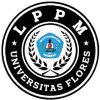PENERAPAN PEMBELAJARAN IPA BERBASIS COMPUTATIONAL THINKING MATERI SIKLUS AIR KELAS V SEKOLAH DASAR
DOI:
https://doi.org/10.37478/jpm.v4i3.2655Abstract
This study aims to describe the application of computational thinking-based learning and its results. Through this research, it can be seen how to integrate computational thinking in learning as well as knowing students' abilities to use the foundation of computational thinking in the learning process. Research using descriptive method with a qualitative research approach. This research was conducted in the even semester of the 2022/2023 school year. The subjects in this study were 25 students in class V A at SD Kanisius Kadirojo, subdistrict Kalasan, Sleman, Yogyakarta. Data analysis in this study used student questionnaires, student worksheets, written tests, and interview guide sheets. From this research, it can be seen that computational thinking can be integrated into learning by using computational thinking foundations in solving problems according to learning materials. Learning in this study uses the foundation of pattern recognition, abstraction, and algorithms. Students can use these foundations indicated by 80% mastering pattern recognition skills, 72% mastering abstraction skills, and 100% mastering algorithm skills. The ability of students to understand learning material is also very good, shown by 76% of students passing the KKM. Students also feel happy with this computational-based learning and feel challenged by using the foundation
Downloads
Keywords:
Computational thinking, Lesson, Water cycle, Elementary schoolReferences
Angeli, C., Voogt, J., Fluck, A., Webb, M., Cox, M., Malyn-Smith, J., & Zagami, J. (2016). A K-6 computational thinking curriculum framework: Implications for teacher knowledge. Educational Technology and Society, 19(3), 47–57. https://pure.uva.nl/ws/files/8964271/A_K_6_Computational_Thinking_Curriculum_Framework.pdf
Ansori, M. (2020). Pemikiran Komputasi (Computational Thinking) dalam Pemecahan Masalah. Dirasah: Jurnal Studi Ilmu Dan Manajemen Pendidikan Islam, 3(1), 111–126. https://doi.org/10.29062/dirasah.v3i1.83
Barcelos, T.S., Munoz, R., Villarroel, R., Merino, E., Silveira, I. F. (2018). Mathematics learning through computational thinking activities: A systematic literature review. Journal of Universal Computer Science, 24(7), 815–845. https://pure.pucv.cl/en/publications/mathematics-learning-through-computational-thinking-activities-a-
Barr, V., & Stephenson, C. (2011). Bringing computational thinking to K-12: What is involved and what is the role of the computer science education community? ACM Inroads, 2(1), 48–54. https://doi.org/10.1145/1929887.1929905
Bower, M., Wood, L. N., Lai, J. W. M., Howe, C., & Lister, R. (2017). Improving the computational thinking pedagogical capabilities of school teachers. Australian Journal of Teacher Education, 42(3), 53–72. https://doi.org/10.14221/ajte.2017v42n3.4
Csizmadia, A., Curzon, P., Dorling, M., Humphreys, S., Ng, T., Selby, C., & Woollard, J. (2015). Computational Thinking: A Guide for Teachers. Computing At School, October 2018, 18. https://eprints.soton.ac.uk/424545/1/150818_Computational_Thinking_1_.pdf
Dewi, A. N., Juliyanto, E., & Rahayu, R. (2021). Pengaruh Pembelajaran IPA dengan Pendekatan Computational Thinking Berbantuan Scratch Terhadap Kemampuan Pemecahan Masalah. Indonesian Journal of Natural Science Education, 4(2), 492-497. https://jom.untidar.ac.id/index.php/ijnse/article/view/2023/pdf_1
Gök, T., & Sýlay, I. (2010). The Effects of Problem Solving Strategies on Students’ Achievement, Attitude and Motivation. Latin-American Journal of Physics Education, 4, 7–21. http://dialnet.unirioja.es/servlet/articulo?codigo=3694877
Hunsaker, E. (2020). The K-12 Educational Technology Handbook Computational Thinking. Edtech Books. https://doi.org/10.59668/7
Kawuri, K. R., Budiharti, R., & Fauzi, A. (2019). Penerapan Computational Thinking untuk Meningkatkan Kemampuan Berpikir Kritis Siswa Kelas X MIA 9 SMA Negeri 1 Surakarta pada Materi Usaha dan Energi 6. Jurnal Materi Dan Pembelajaran Fisika (JMPF), 9(2), 116–121. https://jurnal.uns.ac.id/jmpf/article/view/38623
Kules, B. (2016). Computational thinking is critical thinking: Connecting to university discourse, goals, and learning outcomes. Proceedings of the Association for Information Science and Technology, 53(1), 1–6. https://doi.org/10.1002/pra2.2016.14505301092
Maharani, S., Nusantara, T., Rahman Asari, A., & Qohar, A. (2020). Computational thinking pemecahan masalah di abad ke-21 Critical thinking View project Teaching for Critical Thinking View project (Issue January 2021). WADE Publish. https://www.researchgate.net/publication/347646698
Marifah, S. N., Mu’iz L, D. A., & Wahid M, M. R. (2022). Systematic Literatur Review: Integrasi Conputational Thinking dalam Kurikulum Sekolah Dasar di Indonesia. COLLASE (Creative of Learning Students …, 5(5), 928–938. https://www.journal.ikipsiliwangi.ac.id/index.php/collase/article/view/12148
Rachim, F. (2015). Computational Thinking = Computer Science ++. Kompasiana. https://www.kompasiana.com/fathur_rachim/55e06cc71593736c0a109023/computational-thinking-computer-science
Sanford, J. F., & Naidu, J. T. (2016). Computational Thinking Concepts for Grade School. Contemporary Issues in Education Research (CIER), 9(1), 23–32. https://doi.org/10.19030/cier.v9i1.9547
Shute, V. J., Sun, C., & Asbell-Clarke, J. (2017). Demystifying computational thinking. Educational Research Review, 22, 142–158. https://doi.org/10.1016/j.edurev.2017.09.003
Sugiyono. (2008). Metode Penelitian Kuantitatif, Kualitatif dan R&D. Bandung: Alfabeta. Google Scholar
Supiarmo, M. G., Hadi, H. S., & Tarmuzi. (2022). Computational Thinking Process in Solving PISA Questions in Terms of Problem Solving Abilities. JIML: Journal of Innovative Mathematics Learning, 5(1), 1–11. https://journal.ikipsiliwangi.ac.id/index.php/jiml/article/view/10041
Surya, I., Perdana Sari, R., Rasio Henim, S., & Hanifah, P. (2022). Penerapan Computational Thinking Pada Materi Percabangan Dan Perulangan Untuk Menyelesaikan Permasalahan Sman5 Pekanbaru. Dinamisia: Jurnal Pengabdian Kepada Masyarakat, 6(3), 815–821. https://doi.org/10.31849/dinamisia.v6i3.10020
Suwahyo, B. W. (2020). Problems of Computational Thinking, Teaching, and Learning in a STEM Framework: A Literature Review. 508(Icite), 180–185. https://doi.org/10.2991/assehr.k.201214.233
Tabesh, Y. (2017). Computational thinking: A 21st century skill. Olympiads in Informatics, 11(Special Issue), 65–70. https://doi.org/10.15388/ioi.2017.special.10
Talib, C. A., Aliyu, H., Zawadzki, R., & Ali, M. (2019). Developing student’s computational thinking through graphic calculator in STEAM education. AIP Conference Proceedings, 2184(December). https://doi.org/10.1063/1.5136371
Weintrop, D., Beheshti, E., Horn, M., Orton, K., Jona, K., Trouille, L., & Wilensky, U. (2016). Defining Computational Thinking for Mathematics and Science Classrooms. Journal of Science Education and Technology, 25(1), 127–147. https://doi.org/10.1007/s10956-015-9581-5
Wijaya, E. Y., Sudjimat, D. A., & Nyoto, A. (2016). Transformasi Pendidikan Abad 21 sebagai Tuntutan Pengembangan Sumber Daya Manusia di Era Global. Prosiding Seminar Nasional Pendidikan Matematika, 1, 263–278. https://repository.unikama.ac.id/840/32/263-278
Wing, J. M. (2006). Computational thinking. Communications of the ACM, 49(3), 33–35. https://dl.acm.org/doi/10.1145/1118178.1118215
Wing, J. M. (2014). Computational thinking benefits society. Social Issues in Computing. http://socialissues.cs.toronto.edu/2014/01/computational-thinking/
Downloads
Published
How to Cite
Issue
Section
License
Copyright (c) 2023 Nur Azizah, Yohana Baptista, Christiyanti Aprinastuti

This work is licensed under a Creative Commons Attribution-ShareAlike 4.0 International License.













